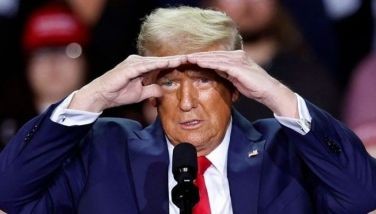US Fed mulls exit plan as Bernanke awaits second term
WASHINGTON (AP) — With his prospects for another term brightening, Ben Bernanke will lead the Federal Reserve this year in pulling back the stimulus money it pumped out to fight the financial crisis that erupted in his first term.
The challenge will be how and when to do so.
At their first meeting of the year, Fed policymakers are likely weighing such matters, including which tools to use. The officials began meeting Tuesday and will issue a policy statement Wednesday. It’s not known whether they will signal their timing and strategy to reverse course.
The Fed is all but certain to leave its key bank lending rate, which affects consumer loans, at a record low near zero. Economists also expect the Fed to renew a pledge to hold this rate, called the federal funds rate, at record lows for an “extended period” — viewed as at least six months.
But some analysts don’t rule out the possibility that the pledge could be watered down or dropped entirely. Doing so would signal to Wall Street and Main Street that the Fed will be moving toward boosting borrowing costs to prevent inflation.
The funds rate has been the Fed’s main tool to influence the economy since the 1980s. But in the wake of the financial crisis, it could lose its influence. Instead, the Fed may soon rely more on another tool: Boosting the rate it pays banks on the $1 trillion in excess reserves held at the central bank. That would raise borrowing costs for companies and ordinary Americans.
Bumping up that rate, now at 0.25 percent, would give banks an incentive to keep money parked at the Fed, rather than lend it. Short-term rates would rise. And economists say so would rates tied to commercial banks’ prime rate, which affects many consumer loans. The federal funds rate would rise, too.
Paying interest on excess reserves helps stabilize the funds rate when the financial system is awash in cash, as it is now. It’s a relatively new tool for the Fed, having been authorized by a 2006 law. Many foreign central banks rely on it. The Fed started paying such interest at the height of the financial crisis in October 2008.
It’s unclear whether the Fed will signal Wednesday that this will become the preferred lever to influence economic activity, employment and inflation. But it’s a tool investors and economists will closely monitor in the year ahead.
With the worst of the financial crisis over, the Fed is gradually moving to remove some of the stimulus money before it can trigger inflation. Some analysts think the Fed might bump up the rate it charges banks for emergency loans. That rate, called the discount rate, is only 0.50 percent. Such a move wouldn’t affect interest rates charged to consumers and businesses. Still, it would likely spook Wall Street. Investors would see it as a step toward higher interest rates.
Bernanke’s term expires Jan. 31. The Senate is expected to vote on his confirmation Thursday or Friday. Bolstered by a White House lobbying effort that included President Barack Obama, Bernanke’s chances for a second four-year term are improving.
- Latest
- Trending




























